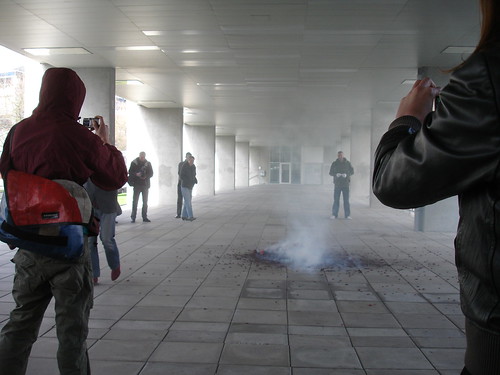seven weeks in rotterdam

Notes on walking:
The different parts of Rotterdam are connected by unfinished dual-carriageways and large patches of water. Silent, empty of people and badly lit. These large bits of land occupy a distorted portion on the map - I get lost in these void spaces regularly, and they are completely still. What kind of city has these vaccuums?


Crimson call the disconnected parts of the city "neighbourhood-modules" and have made a comparitive study of global post-war towns called the new town.
"Forced to find beauty in mediocrity, poetry in pragmatism, history in the absence of monuments and the future in the past, Crimson has been shaped by the experience of living and working in Rotterdam, the city that never thinks."
Funny that, it had crossed my mind today that I'm not thinking as much here. The distinct lack of stimuli on the street has something to do with it. I already inhabit one fantastical island - working in an international office where everyone speaks a form of english, and in that sense I could be living anywhere. Except that as soon as I step onto the actual street, I notice that I've never experienced this lack of richness. I'm living on a road that seems to be the local version of Kingsland Road in London, or rue Jean-Pierre Timbaud in Paris - all the bullet points of the fun first flushes of regeneration are all here, except I can't find the part that is exciting. And also, where is "the new" happening?*
Which brings to mind the "laboratory of indifference":
High pressure work in a low pressure city - OMA could never exist without Rotterdam, a city that has no scene, makes no demands, offers no distraction.
Mr. Koolhaas doesn't spend much time in Rotterdam these days, but I think he has a good point. It's not that there isn't anything happening here. It's just that it's hard to believe that the extra-curricular activity isn't pointless, due to the spatial infrastructure.

(artists blowing up chinese firecrackers at the Netherlands Architecture Institute)
I'll finish for now with Crimson's "Post-Rotterdam" panoramas, speed-history lessons on the constantly-changing landscape.
And an image of their "What If" exhibition, an imagined present-day Rotterdam if the WWII bombings had equalled Dresden, and resulted in radical urbanism:

(Next time I'll try and mention the eery mass of land that is the city centre.)
* This is an aside that require its own riff, and is also a curiosity that I am constantly trying to resist, and also blame London for. There are no fads here, so a part of my retina is eating chocolate, and for this I should be thankful.

0 Comments:
Post a Comment
<< Home